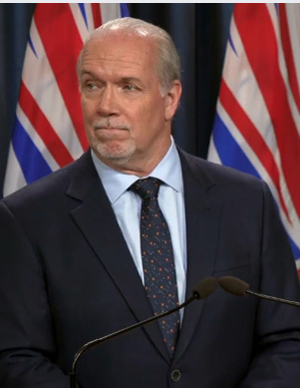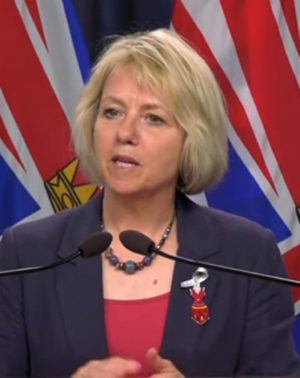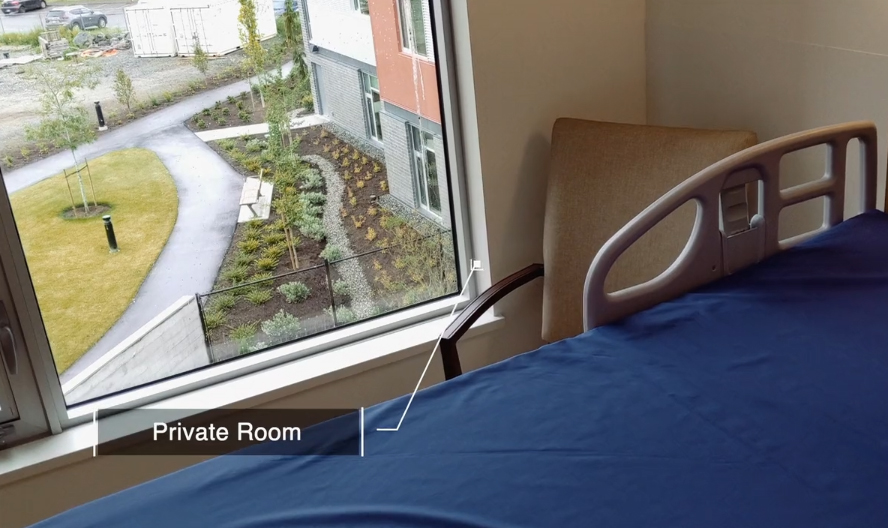Saturday July 11, 2020 ~ VANCOUVER ISLAND, BC
Editorial analysis by Mary Brooke, editor ~ West Shore Voice News
“The COVID-19 pandemic has left no country untouched. It has humbled all of us,” said World Health Organization (WHO) Director-General Dr Tedros Adhanom Ghebreyesus in a media presentation to the world community on Thursday July 9.
It’s no longer news to state the obvious, but this is as good a summary as any: “Disease knows no borders. It does not care about our political differences, and it disregards the distinctions we draw between health and economy, lives and livelihoods. The COVID-19 pandemic has disrupted them all,” said Dr Tedros this week.

He continued by articulating that the COVID-19 pandemic has “exploited the inequalities in health systems and the schisms in societies”. This exposure of inequities has certainly been seen in Canada.
None of that has comes as a surprise to those in BC and Canada who have been living these realities for a long time including everyday working individuals, most families, many households, those caught in a spiral of precarious work and people getting by in small businesses. The wake-up call has been for politicians, governments and those in the ranks of political and financial elite who advise them.
Disparities in Canadian society and economy:
Income and social disparities have been widening and deepening in Canada since after World War II when the economy boomed, but most particularly since the 1980s by way of the worship of economic globalization and indulging in the intoxicating power of online technologies that have enabled a powerful digitization of both the financial industry and the power of opinion-influencers.
The great divide of have’s and have-nots in Canada has been the lived reality for millions of Canadians for decades. The dream of economic equality has been achievable by truly only a well-set few. In BC the great divide was exacerbated by 16 years of BC Liberal government policies that favoured big-business, left a wild-west real estate market untethered, ignored the increasing debt load and cost of living for anyone other than the best-equipped with education and resource, and eroded public education in a way that the skill pool in the workforce became splintered and ill-prepared for responsiveness to 21st-century change.

Thanks to COVID, many disparities in Canada have been laid bare in a way that they can no longer be ignored. That includes backbreaking personal debt load (due to the escalating cost of regular things), people living month-to-month without backup or pension, and the scorching-high cost of housing (especially in big cities).
There is also the pervasive inconsistency of employment opportunities and resultant emergence of the gig economy and precarious work, insufficient supports for small business, racial and gender inequities, a fully blind eye to the proper care of aging seniors, and the burdens of mental wellness issues which result from all of this load.
Addressing immediate needs by way of politics:

Canada’s federal government has overall done well in addressing immediate needs during an economic lockdown, including with various updates and adjustments to ‘get it right’. Programs such as CERB, CEBA, CEWS and others that initially showed huge gaps in government awareness quickly adapted to respond more appropriately to the lived realities of individuals, households, families and small business.

The NDP opposition in particular came to the rescue of Canadians in being ready with awareness and practical suggestions for improvements to Liberal government programs, to which Trudeau and the Liberals acquiesced (gladly willing to uptake the policy readiness, the work done for them, under the duress of the moment). It was an excellent example of cooperation because the situation was dire (similarly seen in BC where Premier John Horgan continues to point out that many decisions during Phase 1 of the COVID pandemic were supported with non-partisan unanimity).
That Canadians had voted in a minority government last year was our own gift to ourselves; without the interplay between the minority Liberals and primarily in Opposition the NDP and Conservatives with ideas for nation-wide application, Canadians would likely have felt many more bumps in the COVID road than we already did.

Basic income safety net to ride waves of change:
One of the many benefits that will hopefully emerge mid-to-post COVID is a basic income safety net in Canada to bridge gaps for individuals, families and small businesses as the economy continues to seize and shift. Even beyond COVID, there will be continual adaptations as life becomes fully operated and managed by algorithms, robots, the Internet, GPS tracking, and automated systems of all kinds. We can expect to see people ‘in between jobs’ at many points in their adult working lives, bobbing upon the top of huge waves that sweep our world forward into a future thought not too long ago to be only of the realm of science fiction.
Leadership highlights shining out beyond BC:

The pandemic has also highlighted how BC has done things differently. From nearly the start of the pandemic, Premier John Horgan and Finance Minister Carole James and the NDP cabinet have taken the approach of ‘topping up’ whatever the federal government created in the way of financial supports for individual Canadians and businesses. British Columbians can count themselves just damn lucky to have this people-first leadership in place before COVID hit.
This approach has also helped the rest of Canada, in that the prime minister and some of the premiers have taken heed of BC’s direction with things. Notably, Canadians witnessed in BC the matter-of-fact people-first approach (no debate required as to what was right), the idea of educating people with public health messaging as a way to garner the population’s voluntary buy-in on self-isolation and economic lockdown (instead of using enforcement), and the insistence that Canada-US borders be closed as the only sensible measure to prevent COVID spread from a less-well contained jurisdiction of infection into Canada where we’ve done pretty well at containing the virus (i.e. flattening the curve).

Singularly, there was no budging on the health aspects of the NHL bringing their games and play-offs to Vancouver; BC has stood firm on that and other potential sources of viral invasion that would potentially undo all the hard work that British Columbians have done to — as Health Minister Adrian Dix puts it — “remain 100 percent all in” with adhering to flattening the curve. It has been about doing the right thing with calm authority, such as taking care of the health needs of temporary foreign workers (here to pick our food crops) as if they were residents here… for the protection and support of all.

As well, singular stardom has been incidentally garnered by Provincial Health Officer Dr Bonnie Henry. Her calm insistence to government leaders that science should lead the way of government enforcement around all things COVID has won accolades for her and the BC Government. On the national level, Canada’s Chief Public Health Officer Dr Theresa Tam took a similar approach and has also become a bit of a public health rock star.
Though it should be noted that the NDP government found a plum of an opportunity to act fully and without apology in accordance with their philosophical bent in ways that greatly pleased the people and tugged the financial elite on their ear like a strict school teacher of olden times. ‘There will be none of that’, as to putting greed over people’s survival when it came to housing. The BC Government’s freeze on rent increases and prohibition on evictions for lack of rent payment due to pandemic-related job loss was perhaps one of the most ferocious live-by-the-political-philosophy moments for Horgan in the pandemic so far, feeling completely in the right and finding a rare irrefutable opportunity to assuage his career-long frustration with those who unabashedly take advantage of others.
So it was BC that was first seen as achieving success with the dance between political leadership and public health, and it was also BC that allowed itself to act with full ferocity when the moment of truth called for it.
Significant technological changes are pushed along by artificial intelligence but also by big economic players (corporate and online retail and social media giants). This will continue to disadvantage many and specific economic sectors, as well as small businesses, self-employed persons, those who fell into and now live in the gig economy, and also women and any groups marginalized by race, ethnicity, gender or income disparity.
The once-in-a-century scope of this pandemic has hammered home a critical lesson: when it comes to health, the destinies of all of us on the planet are intertwined. Whether this mindset bleeds over into the ‘new normal’ is yet to be seen. There could not have been a harsher lesson to become aware of this reality; hopefully it has achieved some success for the future of all individuals, communities and nations.
COVID laid bare the ill preparation for a pandemic:

“For years, many of us warned that a catastrophic respiratory pandemic was inevitable,” said the WHO director general this week. “People from the health sector, even outside the health sector, and our leaders warned about a catastrophic pandemic. It was not a question of if, but when.”
Afterall, there had been Ebola (emerging in 1976, then outbreaks in 1979, 1994-1995, 1996-1997, 2000-2005, 2007-2009, 2012-2016, and 2018-present), HIV/AIDs (emerging mid-1980s and still not conquered), SARS (emerged 2002-2003 but killed so rapidly that it was quickly contained), H1N1 (emerged 2009-2010 and still resurfaces to some degree in mutated forms during flu season), and MERS (emerged 2012). Some people at the top levels of their careers today in public health had direct management or data experience with some or all of those under their belt.
Will there be an opportunity to examine how effective they were in advising governments? Did they try and governments didn’t listen? Did the public health career professionals get too caught up in the academics and not produce enough of a spearhead of effective and easy-to-understand communications into the halls of decision-making power? Was there a lack of explanation of political and economic consequence in the explanations by public health?

And this may sound politically incorrect, but the fact is that COVID-19 has impacted everyone but none of those earlier pandemics did not. Hence the global motivation to get COVID under control as quickly as possible. We can all be thankful for that. But by comparison, Ebola, HIV/AIDS, SARS, H1NI and MERS affected subsets of mainstream western-world society (Ebola primarily in Africa, HIV/AIDS primarily among homosexual men, SARS primarily among travellers from China, H1N1 primarily among seniors or immuno-compromised, and for MERS entirely all cases generating within the Arabian peninsula). Those viral diseases could be ignored by simply changing the TV channel, as a way of accommodating the attitude of ‘the other’.
Sorting out the balance between science and politics:
It could take a while to sort out the ‘blame’ between public health and government, something sensibly left for a while as we deal in real time with pandemic realities this year and next. But the discussion will undoubtedly need to address some fundamental questions:
- Did government receive adequate warnings and details, and if so, did they choose to defer or ignore the need for preparation?
- Was there a lack of communication skill on the part of public health and/or a lack of political will among politicians?
Not a short-term crisis:
WHO claims there were many warnings about a significant pandemic. Either way, the world and its communities were not ready. This health emergency has also produced an economic emergency. In BC we’ve been in an official State of Emergency for months during the COVID-19 pandemic (presently still in effect to end of day July 21).

People with the COVID-19 infection now tally in the millions (more than 12.3 million globally as of July 11) and have died in numbers beyond half a million (556,335 deaths globally as of July 11). In Canada as of July 11 there are 107,347 cases and there have been 8,773 deaths. In BC as of July 10 there have been 3,053 cases and 187 deaths.
Leading to despair and indirectly or directly to more deaths in future during COVID-19 is the reality of various supply chains (notably food supply and personal protective equipment supply) that have been interrupted or damaged. And some services have nearly or totally collapsed (such as the airline industry, therefore interrupting supply chains and mobility for individuals and businesses). This is not a short-term story.
As the time-period of awaiting an effective treatment or vaccine against COVID-19 drags on (possibly into 2021 or 2022), the only sensible thing to do is to produce needed supplies in one’s own jurisdiction. This of course has already been energized for the production of personal protective equipment (PPE), but the same shift will be required for food production and/or the workers who are available as part of food production (a role presently filled largely by migrant and temporary foreign workers).
Lessons for those living gainfully with ease:
There are a few sectors in the business world that have in some ways still been left hung out to dry during the economic challenges of COVID-19. They have a few key things in common. Primarily, these are businesses or industries that have relied on volume sales driven by creating a social or cultural addiction (e.g. to fast food availability, large live concerts or other forms of people-in-seats mass entertainment, large professional sporting events, and global travel adventure).

These constructs were built with compliance to the assumption that people have continuous disposable income and that the economy can continue with endless expansion (whether the size of facilities or number of events or products, with a tax base and/or industry infrastructure to sustain it). Always bigger, always more.
And some sectors — as well as their customers — turned more than a blind eye to the environmental damage of their activities, notably the fuel emissions of aircraft into the environment from hopping on an airplane at will, or the decimation of large rain forests as more land was cleared for ranching to support the fast-food burger industry.
Mother Nature took the reins:

Given how things in life swing one way and then the other, these massive gestures of economic gain and expense were probably always within the range of collapse (even though they seemed too big to fail).
Taking too much, asking too much, and putting the golden prize of mega-wealth above the well-being of people locally and globally… this Mother Nature finally took into her own hands with a virus that has slapped back everyone, hard.

The hubris of those who bought fully into the profit-motive above all else has enabled huge corporations to measure all success by growth. Profit-driven businesses have sold anything that people would buy. There have been many an individual, family, household or small business whose financial and personal well-being has fallen upon the sword of this corporate mission.
Corporate executives and shareholders have by a sense of entitlement to the bottom line wiped out small businesses instead of cooperating with them under their wing, and have crippled various economic sectors in North America by shifting production overseas for access to much cheaper labour.
The disposable culture — well, we have all played into that; things are used once or recklessly continue to deplete natural resources, fill up landfills and pollute oceans. We’ve all played into this eventual calamity — those who drove it profited nicely, and those who consumed and disposed have been complicit as well and paying a price with our financial well-being or even our health and happiness.

But what we’re seeing — no surprise — is that those people and families with lower socioeconomic status, less education, and who live at the pointy end of the sticks of gender bias, racism and other forms of discrimination are paying the highest price. They’ve already been paying the highest price. In some ways COVID-19 has come to their rescue.
The oppressed are rising up:
It should be no surprise that the long-tormented in society are rising up during the socioeconomic pressures of a pandemic. Protests for Indigenous rights, protests against anti-black racism, and demands in support of women’s rights in various ways (including providing for child care and working against domestic violence) are long overdue and being squeezed out from the tube of normality. ‘Enough is enough’ could be the subtitle of the COVID-19 pandemic.

But transition and rescue is probably not in the cards in any immediate sense. COVID has tended to ‘freeze in time and place’ wherever a person, family, household or business was at the moment that COVID hit.
If you found yourself in frontline retail, grocery or pharmacy, service and repair, or hands-on health care delivery, you became part of the armed forces of the war against this pandemic. Like in battles of olde, the generals got to stay back in safe locations while the soldiers took to the front lines to fight. The generals in this war have been those with the good fortune of financial stability, and those in non-manual labour occupations (such as in office work and technological sectors).

A few oddities stick out: for individuals where the calling is high (such as medical doctors, nurses or educators) who found themselves nevertheless on the front lines without recourse, and for businesses where the product or service was truly non-essential (most notably tourism).
Some things that people don’t think of as essential have more than proven their worth — journalism as a service to community comes to mind… writing history in real-time, often on the front lines. At least twice during the pandemic the prime minister identified journalism as an essential service. For many journalists covering the daily stream of COVID news for months, non-stop, has been labour in a work trench.

Many went to the front lines so the rest of us could hide in our homes away from exposure to the virus, or be treated with special service in retail settings like grocery stores to ensure our own shelves were stocked with supplies.
Mental health issues:
Mental health issues will roll out for years from this disparity in roles and obligations. This will have a massive impact within society. There will be financial impacts for the programs that will hopefully be available to support people as they deal with stresses, grief, and the demons of choices (their own or those imposed upon them).

There will be reverberations of the 2020-COVID trauma upon relationships, families, businesses and communities for months or years to come. Businesses will have no choice but to allow for adaptive ways of operating and include sick-time into their operations models (another thing the government will need to sort out in the way of legislation and funding).
A chunk of youth will be victims of education-interrupted. This will set personal lives on unexpected trajectories but also produce gaps in the availability of skilled labour for various economic sectors, until there’s a chance for things to catch up.
Variable impacts on economic sectors:

A few industries just kept their head down and kept on rolling during the first phase of the pandemic, carefully avoiding the line of COVID-fire while maintaining activity and employment. The construction and infrastructure maintenance industry which kept on functioning in BC is one example. Long-distance truckers and delivery services maintained and increased their activities, though they were more likely in the range of COVID exposure during their travels.

A few sectors became the most tragic of the frontline against COVID-19. By far the most obvious is health-care whose workers turned to PPE like a nun to prayer and whose families waiting at home paid the price of exposure to infection. And in particular, the long-term care sector took the brunt for infection rates and deaths.

For years, it was no secret to public health or any governments that listened to public health that long-term care homes for frailer seniors and elders were prime environments for the spread of infectious disease (every year in flu season that was obvious). This is probably the first sector that will be addressed for revision as the dust of the first wave of COVID settles. It will require changes in attitude, adaptation of budgets, and some soul-searching by Canadian taxpayers and policy-makers as well as buy-in from governments and the private care sector to pay what it takes to get this right.
One new care home that opened just this week in Victoria is a model of the new standard of long-term facility for seniors care, including private rooms for all residents as a way to help prevent the spread of communicable disease.
Your own COVID-19 experience:
Wherever you found yourself in life as the COVID-19 pandemic rolled in, that was your starting point for adaptation and revision to your own new normal within the larger sphere of the new normal. It’s all a work in progress that will take months, years and decades for many outcomes to emerge and evolve. We are all in this journey together.
===== About the writer:

West Shore Voice News editor Mary P Brooke, B.Sc., Cert PR has built West Shore Voice News from the ground up over the past 12 years (previously MapleLine Magazine and Sooke Voice News) by addressing the socioeconomic stresses of modern society for an audience of attentive readers. Mary’s background in health science and her passion for empowering people with perspectives they can consider and use is combined with her passion for crafting the English language to effectively present consumable ideas for social change.





